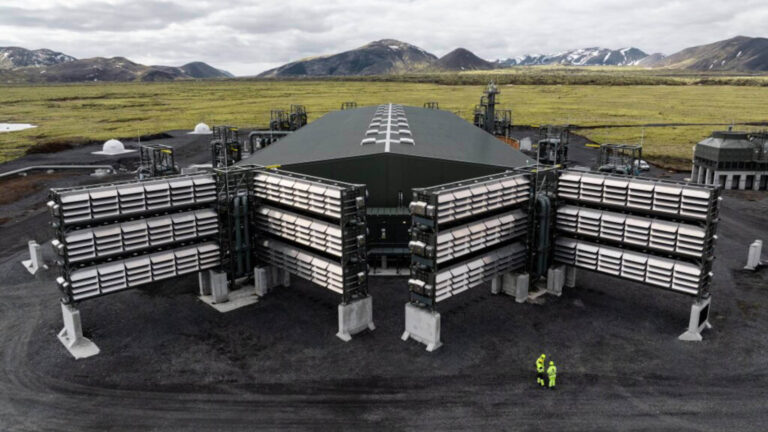Iceland is a country full of interesting statistics. Known for its unique climate and unique national character, it has the most authors per capita in the world, with one in every ten residents having published a book. It is also one of the top consumers of renewable energy, with almost 100% of its energy coming from geothermal or hydroelectric power. Recently, Iceland set a new record by being home to the world’s largest carbon sequestration plant. Read on to find out more about Iceland. Carbon Sequestration An interesting feature of the new Icelandic factory.
What is carbon sequestration and how is it achieved?
Before we dive into the Arctic installations, let’s take a look at carbon sequestration, a key technology for lowering atmospheric carbon dioxide levels. Helps reduce global temperatures and fight climate change Capturing and storing CO₂ in the atmosphere reduces CO₂ concentrations and contributes to mitigating global warming. This is essential to achieving the CO₂ emission reduction targets set out in the Paris Agreement.
Currently, there are three main technologies used for carbon sequestration.
- Carbon capture and storage (CCS): This method captures CO2 from factories and power plants before it’s released into the atmosphere, then transports the captured CO2 via pipeline and stores it underground in geological formations, such as depleted oil and gas fields or saline aquifers, where it can be kept safely for thousands of years.
- Biological isolation: This approach uses natural processes to capture and store carbon: reforestation, sustainable soil management in agriculture and restoration of marine ecosystems such as mangroves and seagrass meadows allow plants and soils to absorb and retain CO₂ from the atmosphere, naturally integrating it into biomass and soil.
- Direct Air Capture (DAC) Technology: These cutting-edge technologies use mechanical devices to extract CO₂ directly from the air. The captured CO₂ can then be stored underground or reused to make industrial materials or synthetic fuels, offering a flexible solution for reducing atmospheric CO₂ levels.
Iceland’s carbon sequestration plant, “Project Mammoth”
Of these technologies, Iceland has chosen the third option, which uses DAC technology to capture carbon from the atmosphere. The plant, named the Mammoth Project, will: Opening in May 2024It’s designed to capture up to 36,000 tonnes of CO2 per year, making it the largest facility of its kind in the world – the technology is still in its early stages, but its predecessor, the Orca facility, captures around 4,000 tonnes per year.

Iceland is committed to using renewable energy in all its processes, and the Mammoth plant is no exception. It therefore runs on geothermal energy from the Hellisheidi power plant, minimizing its carbon footprint. CO₂ capture is done by 72 collection units that filter the air to absorb the CO₂, which is then mixed with water and injected into underground basalt formations. Here, the CO₂ reacts with the basalt and is mineralized, turning it into stone, where it can be stored forever, as explained in this article on carbon mineralization.
The Swiss company behind the project aims to scale up the technology to capture megatonnes of CO2 by 2030 and gigatons by 2050, making a significant contribution to global warming goals. The technology has already attracted interest from countries such as Norway, Kenya, Canada and the United States. For example, the United States is Over $600 million invested In development Carbon Sequestration technology.
Currently, the main challenges for DAC technology are reducing costs and improving energy efficiency: it costs about $1,000 to capture one tonne of CO₂, a figure expected to fall to $300 by 2030. Meanwhile, ongoing efforts to reduce CO₂ and other greenhouse gas emissions through renewable energy sources remain critical.
source:
photograph:



